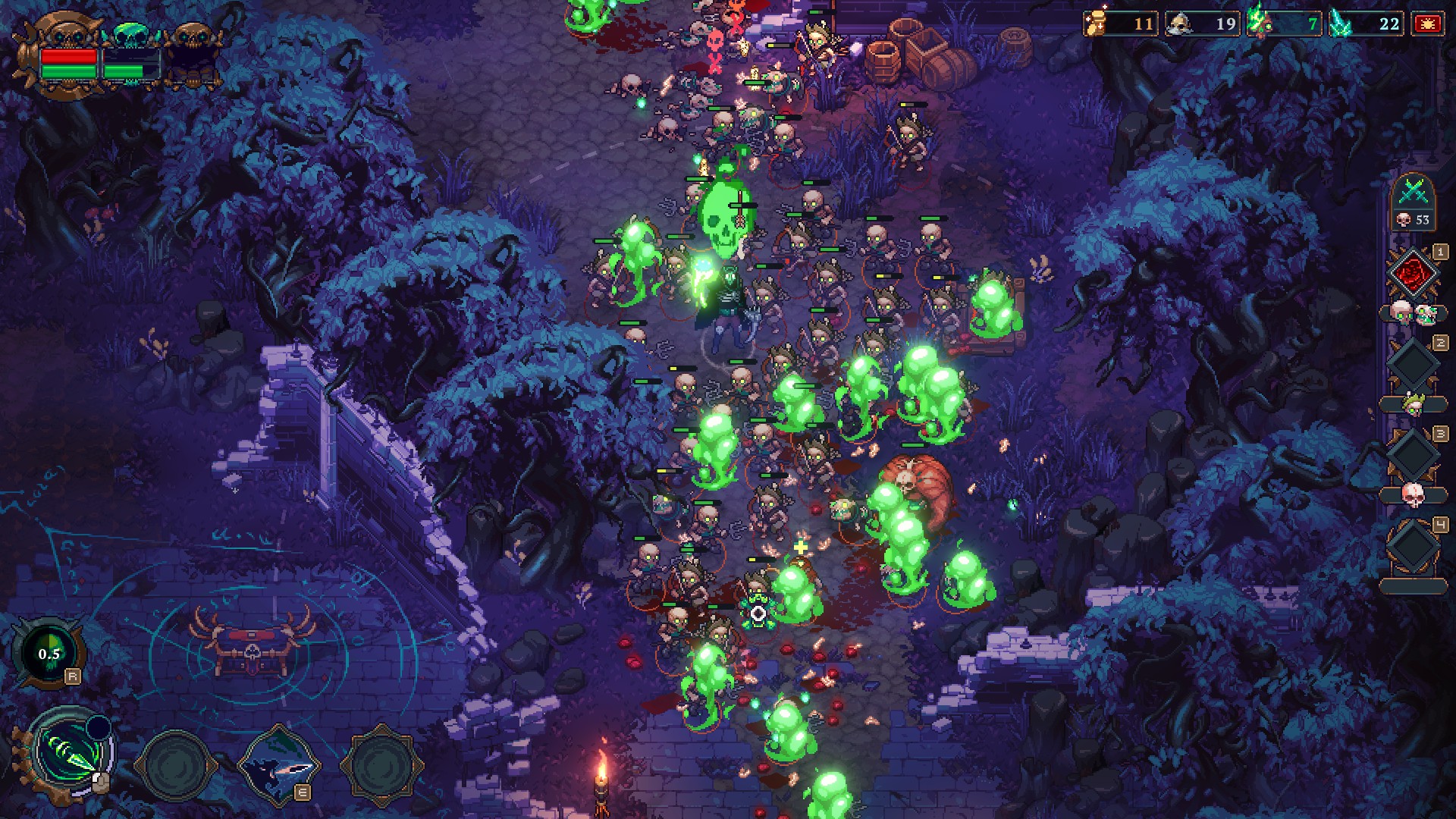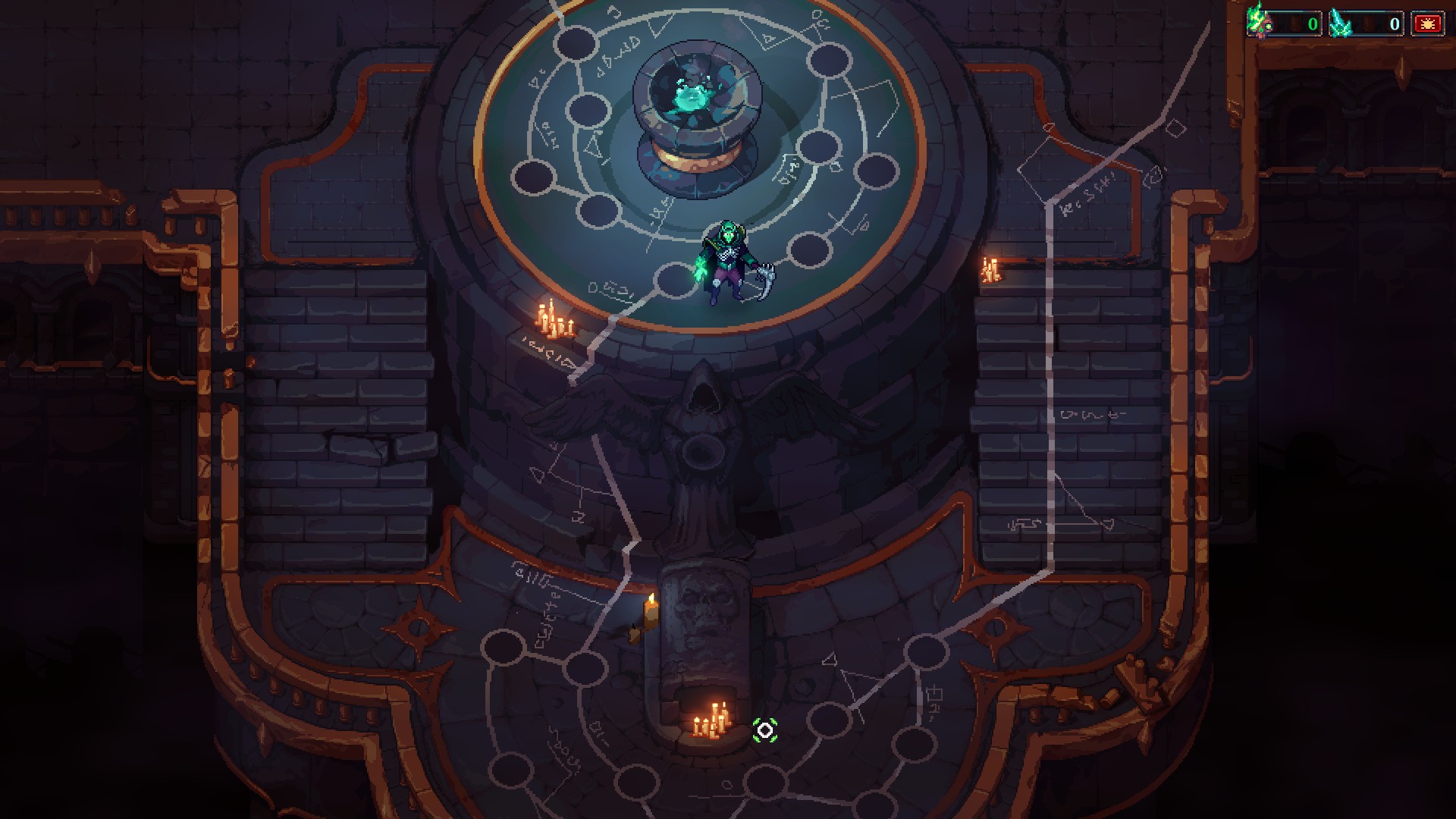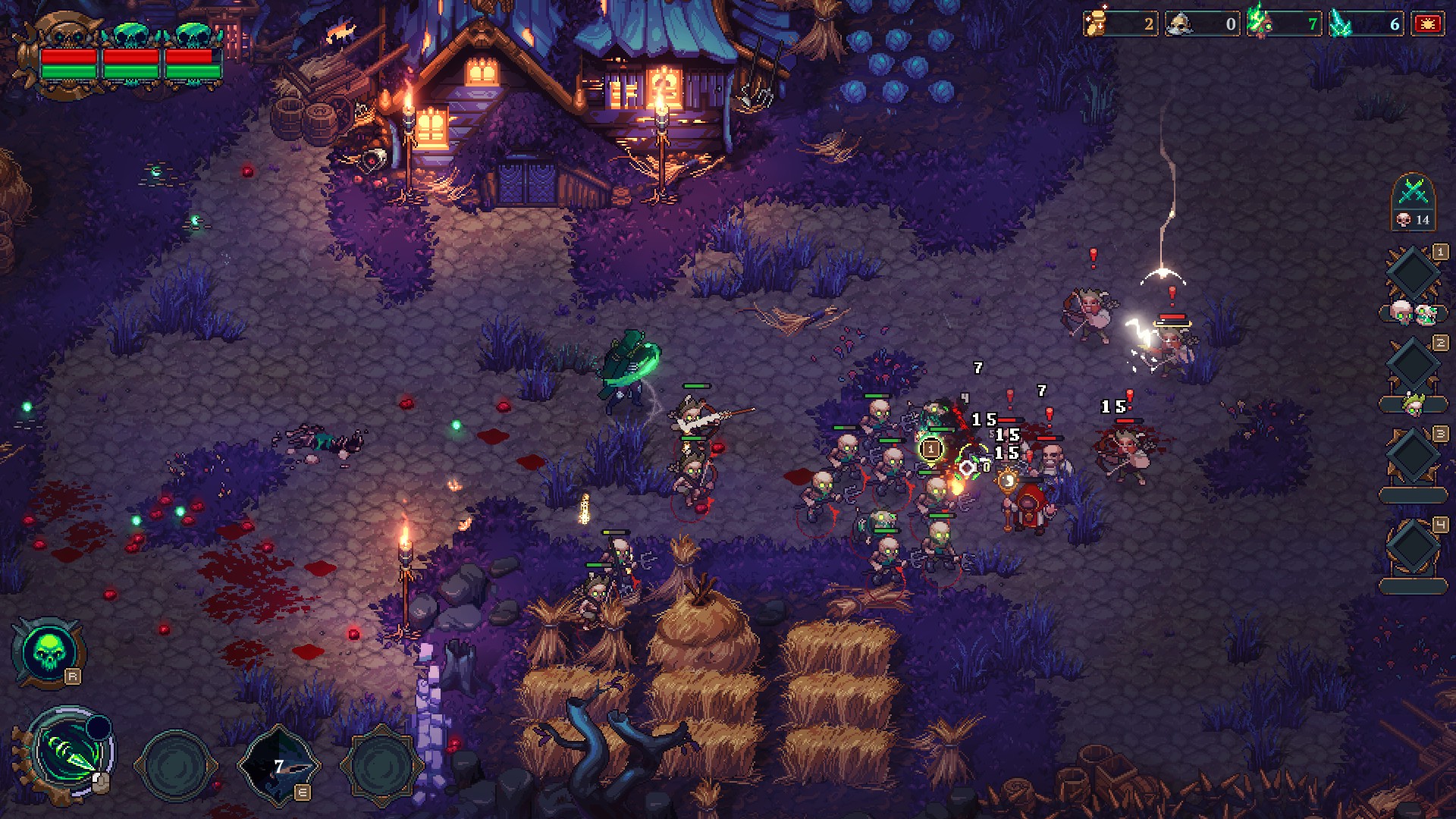Preview: The Unliving
2022-12-13 by George P
Roguelike with a Dark Twist
The Unliving is a unique isometric roguelite with light RTS elements that entered its Early Access phase just a little more than a month ago, on the 7th of November 2022. In The Unliving you enter a dark and morbid world known as the Buried Isles filled with zombies, skeletons, corrupted magic, tainted souls, and all sorts of unholy abominations. And while you may think that in this game you are obviously going to play as some hero of the light who is going to defeat evil and save humanity, you will be surprised by The Unliving’s twist. In a gaming landscape where isometric and top-down roguelikes are a dime in dozen, developers are incentivized to come up with clever new ideas to shake up the traditional formula, which is exactly what the team behind this title has done. In The Unliving you don’t fight against monsters, zombies, or skeletons but instead, you control them as you assume the role of a dark and immortal Necromancer. As a corrupted necrolord you will use your trusty scythe as well as an array of sinister spells to eliminate soldiers of a mysterious order known as the “Church of Zolar”.
Using necromancy, you will raise armies of the undead and unleash devastation against your enemies who will get increasingly powerful. The Unliving is without a doubt one of the most good-looking pixel art games I have ever played. From the character designs, the smooth animations, the colors, the awesome particle effects, and the astonishing attention to detail, the game’s visual presentation is simply top-notch. It is apparent that the team behind the game possesses a clear aesthetic vision as well as the talent and competence to bring it to life. The environmental design is especially breathtaking and there were multiple instances where I simply just stopped playing in order to admire all the elements, big or small, that made the world both charming and visually engaging. Most importantly, this level of graphical excellence is not just limited to the environment and the more static backgrounds, but also stretches out to the main gameplay itself. With fluid and striking animations, interactive objects, and dynamic characters, The Unliving is visually interesting to both play as a game and admire as a work of art.

Commander First, Fighter Second
Speaking of dynamic gameplay, there are a lot of smart ideas and positive characteristics that the Unliving can be praised for beyond its visual character. What I thought was especially interesting while playing The Unliving is how the game shapes a gameplay loop that combines the conventional combat that you would expect from an isometric roguelike with more tactical elements found in RTS titles. This means that while you will be doing all of the roguelike combat things that you are used to such as dodging, slashing, shooting, etc., you will also be commanding a small army that will act as your primary tool in overcoming hostile hordes. Not only you will have to constantly manage your army’s positioning to achieve ideal results, but you will also utilize a clever skills system that allows you to sacrifice units of your undead to trigger helpful abilities. These can range from explosions to spinning daggers, to healing pulses, to gigantic stomps, and much more. This additional layer of micromanagement makes the overall system of commanding your army much more dynamic and engaging and helps expand the game’s skill ceiling.

Due to the game’s unconventional character in the genre, it took me a while to get used to this unique combat loop, and I very much enjoyed learning about all the different mechanics and figuring out optimal strategies. It is quite easy to die if you get cocky and become too offensive as your character himself isn’t strong at all, and it is only through the power of your undead army that you will be able to overcome the game’s many challenges. I very much like this direction in the Unliving’s design philosophy as it makes necromancy the central pillar of the gameplay loop rather than just a secondary mechanic. The Unliving’s progression system is also quite deep and expansive, as even the game describes itself as an RPG. The Citadel acts as the Unliving’s central hub and it is where you will be able to not only evolve your necromancer and prepare your build for the next run, but it is also the place where you will meet a diverse range of different characters and learn more about the game’s world and lore.

The Bumps and the Road Ahead
The Unliving can be praised for many of the elements that it successfully executes in various departments, from the aesthetic vision to the clever mechanics, the hybrid gameplay, and the interesting worldbuilding. At the same time, however, the game does unfortunately suffer from some key issues that need to be highlighted. The problems that become obvious quite immediately are primarily those revolving around the game’s technical side. For the time being, The Unliving lacks the technical polish to be consistently enjoyable throughout an entire run. Issues concerning the command system and the AI pathfinding are especially prevalent and since they affect the core of the gameplay loop, they can quickly make the game feel tiresome and even frustrating if they arise.
Another set of problems revolves around certain design decisions that can make the game feel chaotic and unintuitive, especially in the later stages of a run where managing your army can feel clunky and random. At the moment, the level of replayability is also not ideal and there were instances where the game felt a bit repetitive even after just a short amount of playtime. What I can say, however, is that even with these issues in mind I still consider the Unliving a fun time for the present and a very promising title for the future. There is no doubt that the developers behind the game will have to confront both technical obstacles as well as design dilemmas in their development journey, but I am confident from what I have seen so far that The Unliving can eventually evolve into something truly special within the genre.